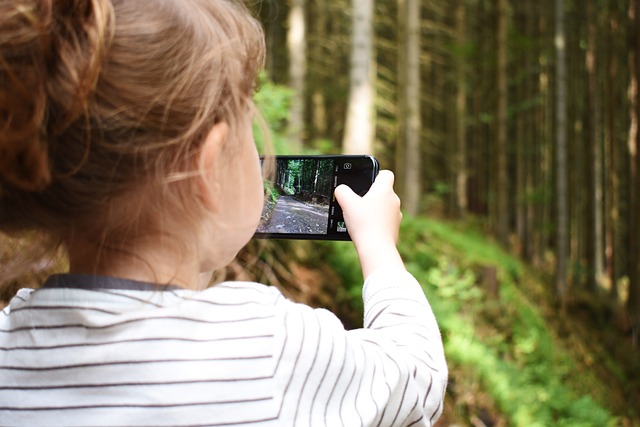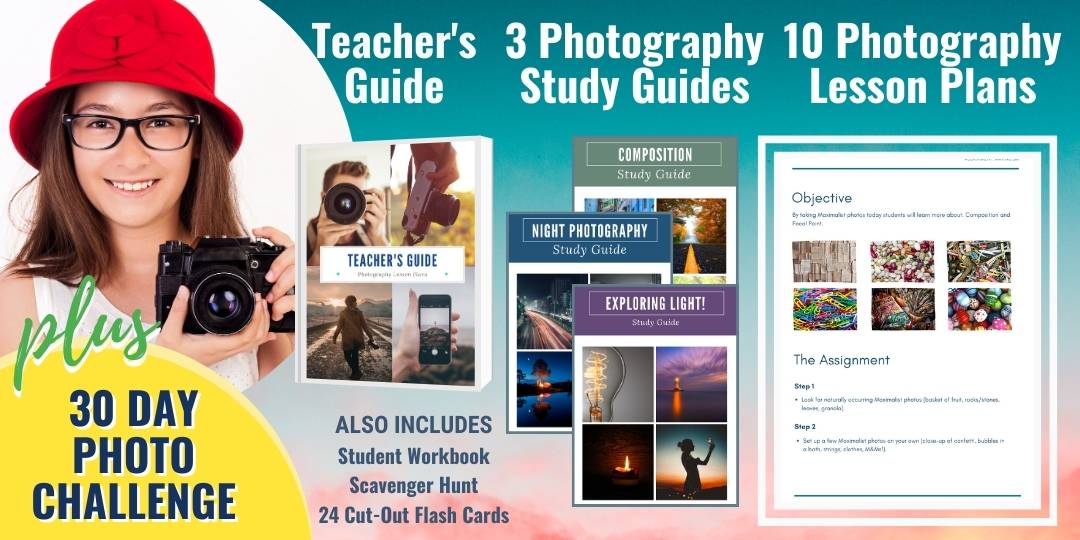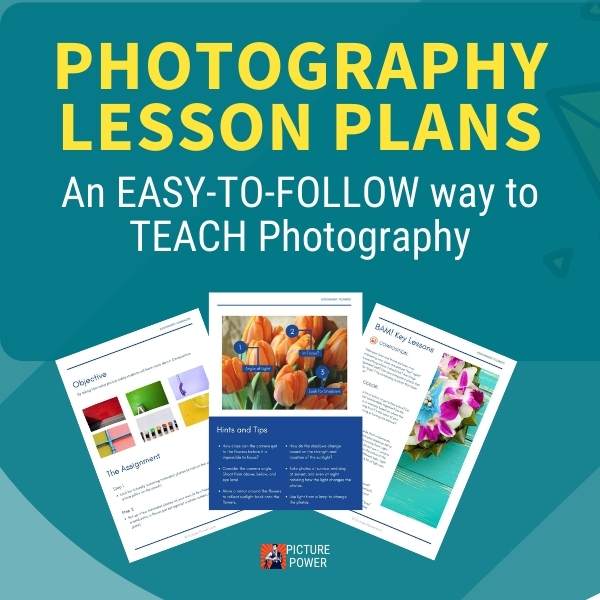5 photography lessons for kids using smartphones
In today's world, everyone has a camera in their pocket at all times. Smartphones have made it possible for anyone and everyone to be a photographer. And that's a good thing! Photography is a great way to capture memories, tell stories, and express creativity.
But just because anyone can take a picture doesn't mean that everyone knows how to take a great picture. That's why we've put together these five photography lessons for kids using smartphones.
These lessons will help your child develop their eye for composition, lighting, and storytelling so that they can take beautiful pictures that you'll cherish for years to come.
Photography lesson plans pack (Printables)
Jump right into teaching photography with our exclusive Photography Lesson Plans pack.
Includes:
- 10 Photography Lesson Plans
- 1 Teacher's Guide
- 3 Photography Study Guides
- 30-Day Photography Challenge
- 1 Student Workbook
- 24 Cut-Out Photo Flash Cards
- 1 Photo Scavenger Hunt
5 Photography Lessons for Kids Using Smartphones

photography lessons for kids #1:
The Rule of Thirds


One of the most basic principles of composition is the rule of thirds. This rule simply states that an image is more visually appealing when the subject is not centered but rather off to one side or another.
To apply the rule of thirds using a smartphone, open the camera app and look for the option to turn on the grid lines. This will divide the frame into nine equal parts with two horizontal lines and two vertical lines.
When taking a picture, place the subject along one of those lines or at one of the four intersections formed by the lines.

photography lessons for kids #2:
Leading Lines


Leading lines are another important compositional tool that can help guide the viewer's eye toward the subject of an image. Leading lines can be literal lines like roads or sidewalks but they can also be implied lines like fences, rows of trees, or even power lines.
To photograph leading lines using a smartphone, look for patterns or shapes in the scene that lead your eye toward the subject and center them in the frame.
For best results, use contrasting colors to make the lines stand out even more.

photography lessons for kids #3:
Lighting


Lighting is one of the most important aspects of photography but it's also one of the most difficult to control—especially when using a smartphone camera. The good news is that there are some easy ways to improve your lighting without any fancy equipment.
One way is to use natural light by Positioning yourself and your subject near a window or outdoors in open shade.
Another way to improve your lighting is by using fill flash, which is when you use the flash on your phone even when there's plenty of light available. Fill flash can help fill in shadows and reduce harsh contrast for a more balanced photo.

Photography lessons for kids #4:
Perspective
Perspective refers to the relationship between objects in an image as well as their distance from the camera lens.
By changing your perspective, you can often make an ordinary photo much more interesting and visually appealing.


To change perspective using a smartphone, try getting closer to your subject or moving higher or lower relative to them (for example, shoot from ground level up towards a building).

photography lessons for kids #5:
Storytelling


A picture may be worth a thousand words but great pictures often tell stories that go far beyond words alone. When telling stories with photos, it's important to think about who or what your audience is and what message you're trying to communicate with your images.
To create story-telling photos with smartphones, think about what emotions you want to evoke in viewers and stage scenes accordingly.
For example, if you want viewers to feel happy, try photographing people smiling or laughing; if you want viewers to feel nostalgic, try photographing old buildings or classic cars; if you want viewers to feel scared, try photographing creepy shadows or dark alleyways—you get the idea!
With these five photography tips for kids using smartphones, your child will be well on their way to taking amazing pictures that you'll treasure forever!
Just remember: composition (the rule of thirds and leading lines), lighting (natural light and fill flash), perspective (get closer/change angles), and storytelling (stage scenes) are key!
With practice, patience, and some trial-and-error—not mention some truly stunning photographs—your child will be impressing everyone with their photographic skills in no time!
Photography lesson plans Pack
Want more photography lesson plans for kids? You're in luck!
Check out our mega pack of lesson plan pack with assignments, teachers guide, flash cards and much more!
Learn more about our exclusive Photography Lesson Plans Pack for Teachers and Kids by clicking the button below...














